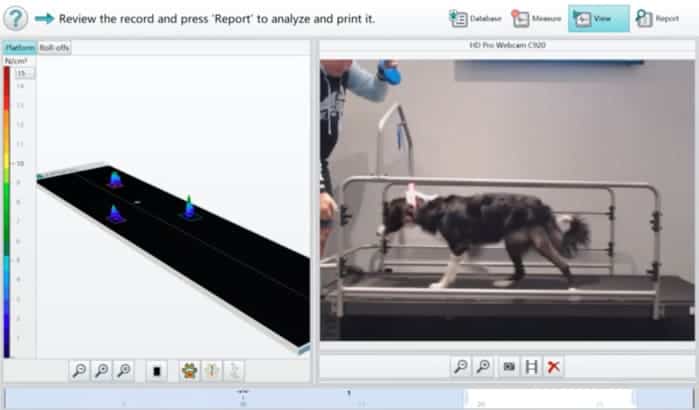Where Did We Get The Idea Of Walking Dogs On A Treadmill From?
The idea of using some sort of pressure plate to measure our patients’ gait (walking) sprouted in the early days of conceptualising the Animal Rehab Klinik. One day during our studies, we were practising on a patient and we ran into a problem – was this old, arthritic dog actually feeling better, or was it just our wishful thinking? The owner was in the same boat, some times his dog seemed better but at other times he was just as bad. Thinking on our feet, we pulled out a small pressure plate that Matt used to use to fit his human patients with orthotics, so we set that up to see what would happen if we put our not-so-human patient on it.
It wasn’t perfect – it could only fit either the two fore or hind limbs at a time, but what we could do was see the balance from left to right and compare that to before and after our treatment. It was clear that our ABM treatment was having a positive impact, the owner was impressed now that he could actually visualise the changes and we knew we were on to a winner.
It took about 6 months of searching, but we eventually found what we were looking for.
Why We Needed More Information About Our Dogs Injuries
With our background coming from the human world, one of the key differences between treating animals and humans is that animals don’t speak. With a human patient, questions such as what exactly did you do, where does it hurt, what the pain feels like, have you had similar pain before, what aggravates it or what makes it better can help us drill down to help find the root cause of the pain. In some cases, questions like these are enough to form an accurate diagnosis before we’ve even done a physical examination. Not being able to ask many of these questions leaves a significant gap in the information we can gather which can be problematic…but this is the exact problem that our pressure plate treadmill solves.
How Does A Dog PRESSURE Plate Treadmill Work?
A lot of us might have seen or even used something similar before. If you’ve ever bought new shoes from
The Athletes Foot before you’ve probably walked on their ‘my fit’ pressure plate. It’s fitted with thousands of sensors that show their staff exactly how your foot bears weight on the ground. If you put this pressure plate underneath a treadmill and adjust the software to look for 4 feet instead of two, then you’ve got our pressure plate treadmill.
We get our patient up on the treadmill, start the belt bring it up to a good speed then press record on our software. Using the pressure felt on the sensors, and with a high-speed video camera It’ll record your dogs’ gait which is then processed into an easy-to-read report.
What Does It Tell Us?
